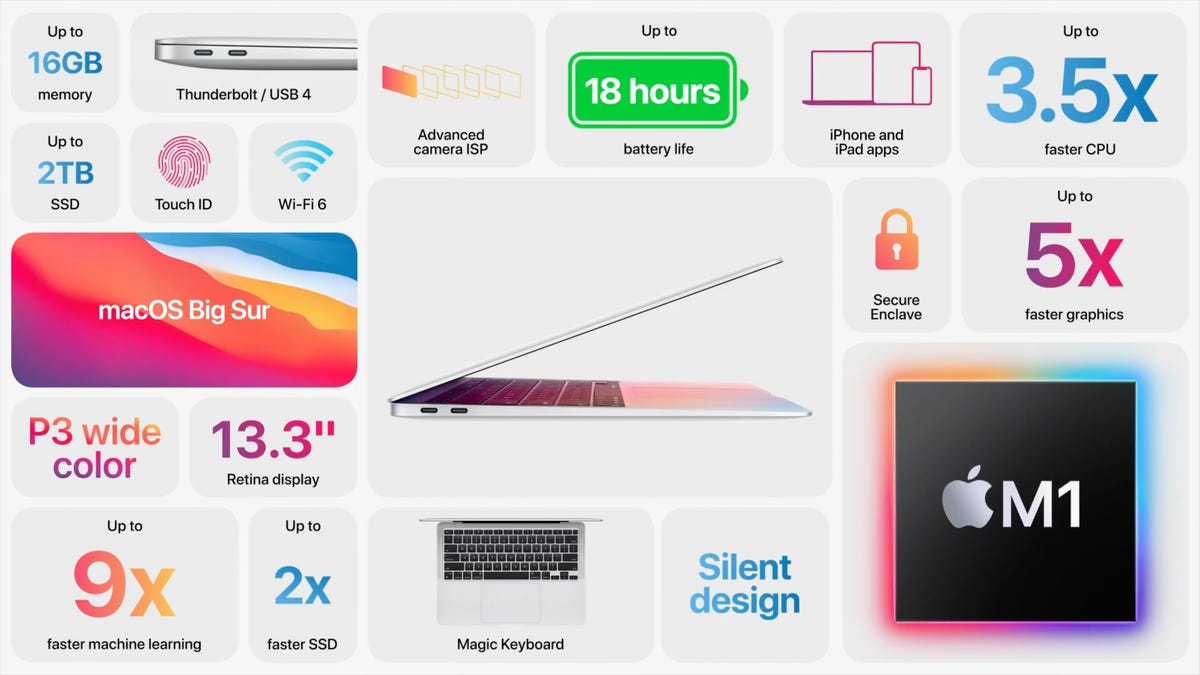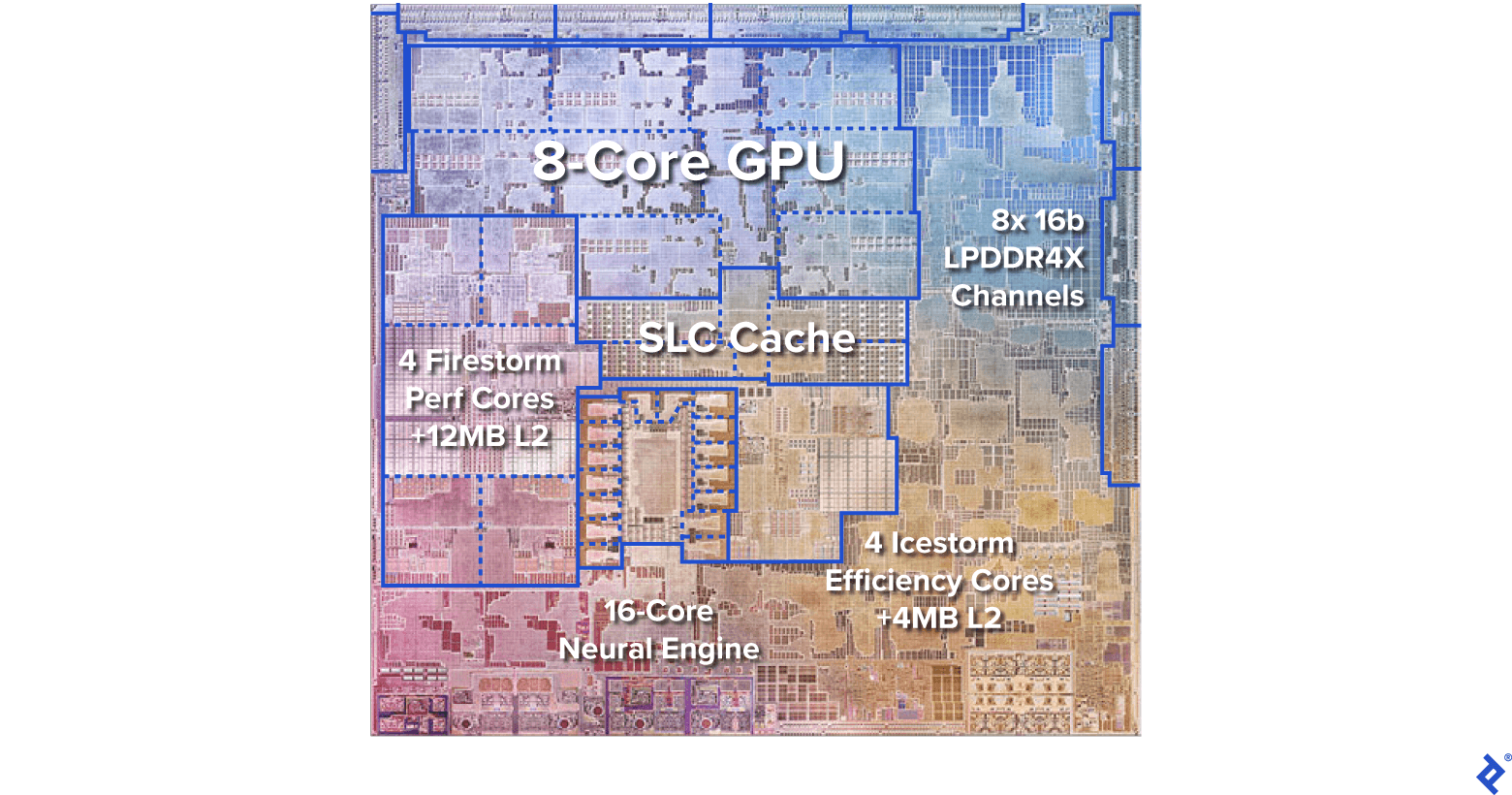Look, I know architecture talk is boring, but the M1 isn't just Intel with fancy marketing. Apple actually redesigned how the whole computer works, which is why it doesn't suck like previous ARM desktop attempts.
Apple Put Everything on One Chip
Apple got tired of Intel's bullshit and decided to build their own processor in November 2020. The M1 is Apple's first custom chip for Macs, and they basically crammed everything onto one piece of silicon. Built on TSMC's 5nm process with 16 billion transistors, it's a system-on-a-chip that puts CPU, GPU, RAM controller, and everything else in one package.

Unified Memory Actually Works
Instead of the CPU and GPU fighting over separate pools of RAM like in regular PCs, the M1's unified memory architecture lets everything share one big pool. No more copying data back and forth - everything just accesses the same memory directly.

Here's the thing: regular PCs are constantly copying data between CPU memory and GPU memory like idiots. The M1 just lets everything use the same memory pool, which is obviously better but nobody else bothered to do it right.
You get either 8GB or 16GB of unified memory soldered to the board (no upgrades later, so choose wisely). The 8GB feels like 16GB on Intel machines because there's no overhead from copying data around. Still, if you're a developer who keeps Chrome open with 47 tabs while running Docker, get 16GB.
Fast Cores + Slow Cores = Smart Design
The M1 has 8 CPU cores total but they're not all the same - this took me forever to understand when I was trying to optimize a Python script that kept bouncing between cores:
- 4 Performance Cores: Handle the heavy shit - video editing, compiling code, anything that needs speed
- 4 Efficiency Cores: Take care of background tasks and light stuff at 1/10th the power
This setup means you get really good single-core performance when you need it, but your battery doesn't die when you're just checking email. The performance cores wake up for demanding apps like Final Cut or Xcode, while the efficiency cores handle macOS being macOS in the background.
Integrated Graphics That Don't Suck
The M1 comes with either 7 or 8 GPU cores (base models get the 7-core version) that push 2.6 teraflops. Unlike Intel's sad integrated graphics, this thing actually handles 4K video without choking and can edit multiple streams in Final Cut without dropping frames.
The GPU shares that unified memory pool, so instead of being stuck with 128MB of dedicated VRAM like most integrated graphics, it can use all your system RAM. This means smooth 4K playback and decent performance in games that actually run on macOS (spoiler: not many).
Neural Engine for AI Stuff
Apple stuck a 16-core Neural Engine in here that supposedly does 11 trillion operations per second for AI tasks. Honestly, I mostly notice it in photo processing - the Photos app is much faster at recognizing faces and Siri doesn't completely suck anymore.
Reality check: 11 trillion ops/second is meaningless marketing speak. What you actually notice is Photos app doesn't take forever to recognize faces and Siri stops being completely useless.
It handles stuff like:
- Live language translation (actually works in Safari)
- Photo analysis and face recognition
- Siri not being terrible
- Video effects in FaceTime
- Whatever machine learning your apps are doing behind the scenes
Apple claims it's 15x faster for ML tasks than Intel Macs, which sounds like marketing bullshit but the results are genuinely noticeable in apps that use it. The CoreML benchmarks back this up - tasks that took minutes on Intel now finish in seconds.
Battery Life That Doesn't Lie
The efficiency is legitimately impressive - my MacBook Air never gets warm and the battery actually lasts forever. Here's what that means in practice:
- Fanless MacBook Air: Completely silent, never gets hot on your lap
- 18+ hour battery life: Actually achievable, not just Apple marketing numbers
- No thermal throttling: Stays fast even when you're pushing it hard
- Instant wake: Like an iPhone - lift the lid and it's ready immediately
I regularly get 12-14 hours of actual development work on my MacBook Air, which would have been impossible with Intel. The same M1 chip handles both the fanless Air and the Mac mini with a fan - it just adapts to whatever thermal situation it's in.



